The microwave oven is an appliance that contributes to the convenience of living in a home-on-wheels while traveling wherever your spirit leads you. But if your RV’s microwave isn’t working, the great conveniences of rapid heating, cooking, and defrosting are gone, and with it your ability to save propane by tossing something into the microwave for a minute or two instead of heating it on the stove. In today’s post, we’re offering several good ideas for troubleshooting an RV microwave that’s not working, so that if you ever experience this issue in your RV, you’ll know what to do.
-
1)
My RV Microwave Is Not Working and Shows No Display or Interior Light
- 1.1) Make Sure Your Microwave Is Firmly Plugged In
- 1.2) Check/Flip the Breakers on Your Power Pedestal
- 1.3) Check Your House AC!
- 1.4) Check the Breakers In Your Power Converter/Breaker Box
- 1.5) Check Your GFCI Outlets and Reset If Necessary
- 1.6) Test the Outlet
- 1.7) Check the Microwave’s Internal Fuse
- 2) My RV Microwave Suddenly Turns Off While I’m Using It
- 3) My Microwave Runs But Isn’t Heating Food
My RV Microwave Is Not Working and Shows No Display or Interior Light
If your RV microwave isn’t working, the display isn’t illuminated, and the interior light doesn’t come on, here are seven ways to troubleshoot the issue.
Make Sure Your Microwave Is Firmly Plugged In
The first one may seem obvious, but you’d be surprised how many times people move straight to in-depth troubleshooting before making sure a non-working appliance is firmly plugged into the socket.
If your microwave is showing no signs of life, your first order of business is to make sure the cord is firmly plugged in. Don’t just take a peek at it and assume all is well. Unplug it and plug it back in firmly to confirm that neither your outlet nor the cord is the source of the issue.
Check/Flip the Breakers on Your Power Pedestal
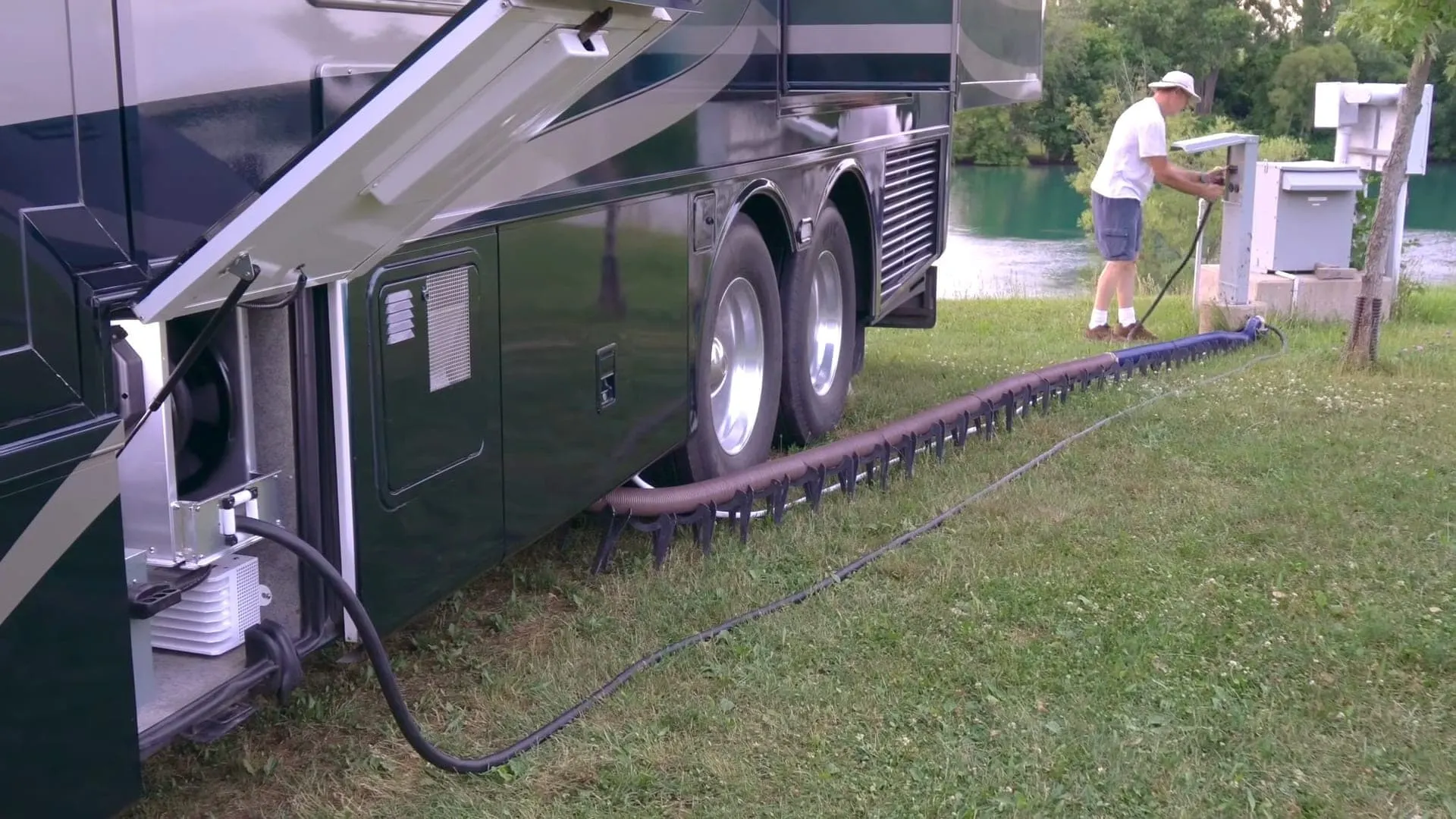
If your RV microwave is not working and your rig is plugged into shore power, remember to check the power at the pedestal! Make sure your power cord is plugged in firmly, and flip the circuit breaker to make sure there’s not an issue at the pedestal itself.
Once you’ve confirmed that the appliance is firmly plugged into the outlet, step outside and move to your outside power source.
If you’re plugged into shore power at a campground, go to your power pedestal and check the breaker(s). Flip the breaker(s) off and back on again, then go back inside and check to see if your microwave is showing signs of life. If not, try plugging into another outlet on the pedestal or another power pedestal.
If your RV’s microwave isn’t working, but you’ve confirmed that your shore power source is functioning, then it’s time to check your house air conditioner.
Check Your House AC!
Now that you’ve confirmed that your microwave is firmly plugged into the outlet and all appears to be well at the power source, turn on your RV’s air conditioner. Why? Your microwave and your AC run on the same power supply. So, if the air conditioner is working, then theoretically the microwave should work as well. With this test, you’re attempting to isolate your microwave as the source of the problem.
If the air conditioner runs fine, then you’ve confirmed that the issue is with the microwave as opposed to an electrical issue affecting your RV’s entire 120V system.
If you turn on your air conditioner and it’s NOT working, then you’ll need to check the 120-volt power supply to your coach’s electrical system.
Check the Breakers In Your Power Converter/Breaker Box
If your microwave isn’t working, but your air conditioner is working just fine and the 120V power supply to the RV is A-okay, then move over to your power converter (or breaker box).
Here you’ll want to check to make sure the breaker that serves your microwave isn’t tripped. Even if it isn’t, try flipping the microwave’s breaker off and back on again, in case it was partially tripped and not sending power through to the appliance.
If you find that the breakers are all on and everything looks good at the converter/breaker box, it’s time to move to the GFCI outlets in your rig.
Check Your GFCI Outlets and Reset If Necessary
Check the GFCI outlet nearest your microwave to see if it needs to be reset. Not familiar with a GFCI outlet? No problem! We’ve got you covered.
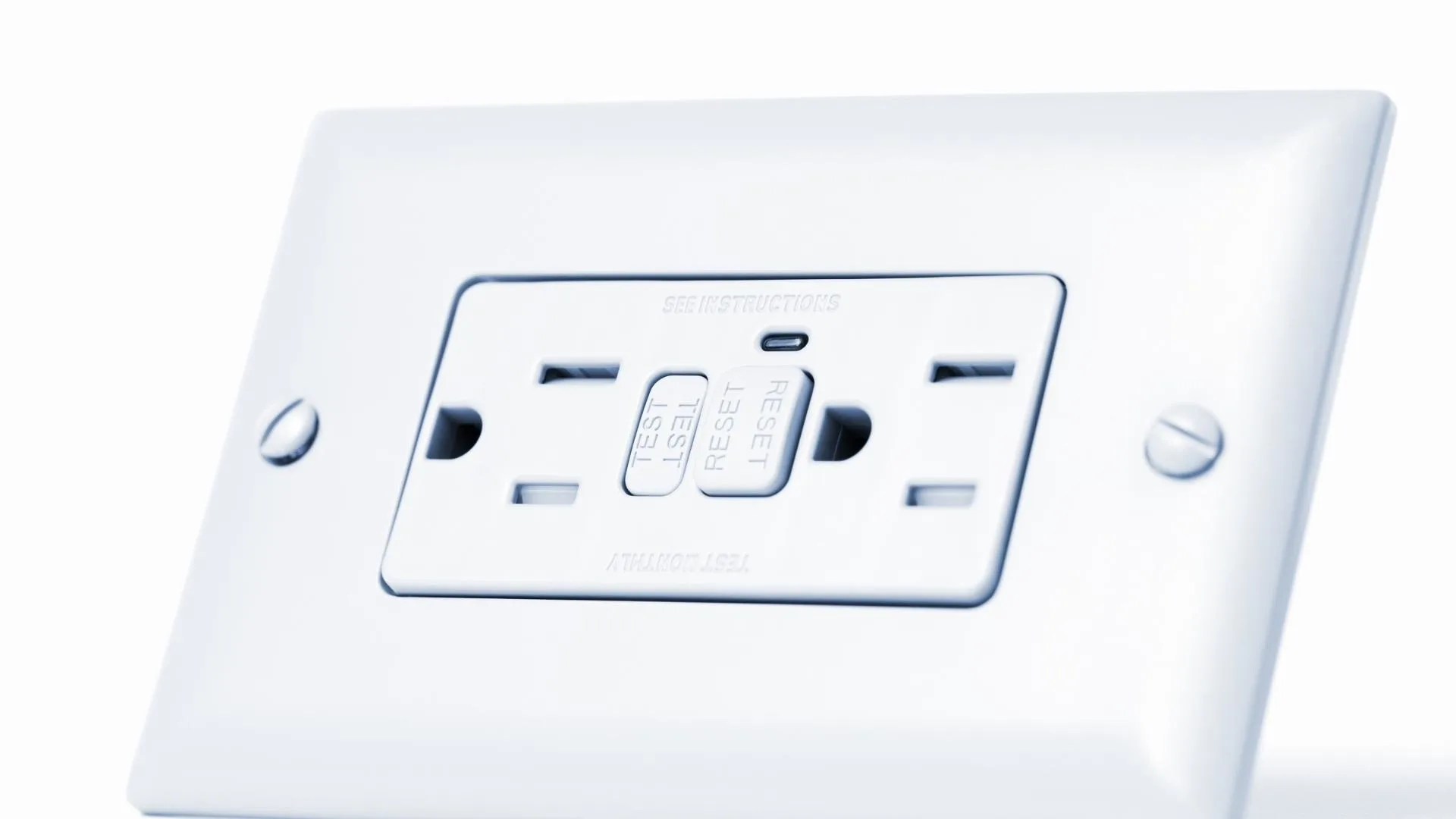
This is what a GFCI outlet looks like. Note the test and reset buttons at the center.
GFCI stands for “ground fault circuit interrupter”. It actually exists to prevent electrocution. The idea is for the GFCI to sense a problem with the electrical wiring (like a short) and cut off power to the outlet before you can be harmed.
GFCI outlets are most often installed where electrical circuits could come into contact with water, so there may be one in your kitchen near your microwave. GFCI outlets are a bit larger than a standard power outlet and have a reset (or testing) button in the center. Push the button to reset the outlet. It’s possible that your microwave will start working again!
If not, then move on to the next step…
Test the Outlet
If you’ve checked your outside power source to confirm that power is coming to your microwave from outside, it may be time to test the outlet into which your microwave is plugged.
There are a couple of ways of doing this, the first of which is the easiest.
If possible, plug your microwave into a different outlet. If it works in a different outlet, you’ve just ruled out the microwave itself as the problem and confirmed that you’ve got an issue related to the outlet.
To truly test the outlet, unplug the microwave and use a multimeter to check the voltage coming to the appliance.
- VERSATILE DIGITAL MULTIMETER - Accurately measures AC/DC Voltage, DC Current, Resistance, and Diode. This Multimeter is a really useful tool for...
- TROUBLESHOOTING WITH ACCURACY - This Multimeter has a sampling speed of 2 times per second; Built-in a backlight LCD display with 3 ½ digits (1999...
Follow the steps outlined in this post to safely test your power outlet using a multimeter. Be sure to take the safety precautions outlined in that post.
If you’ve confirmed that the microwave doesn’t work even when plugged into a different outlet, then your microwave likely either has a bad internal fuse or the appliance itself is the problem and requires replacement.
Check the Microwave’s Internal Fuse
If you don’t have the owner’s manual for your microwave oven, look online for a diagram for your make and model of microwave. Either of these should show you where the internal fuse is located. You’ll need to replace the fuse with a fuse that has the same rating as the one currently installed in the microwave.
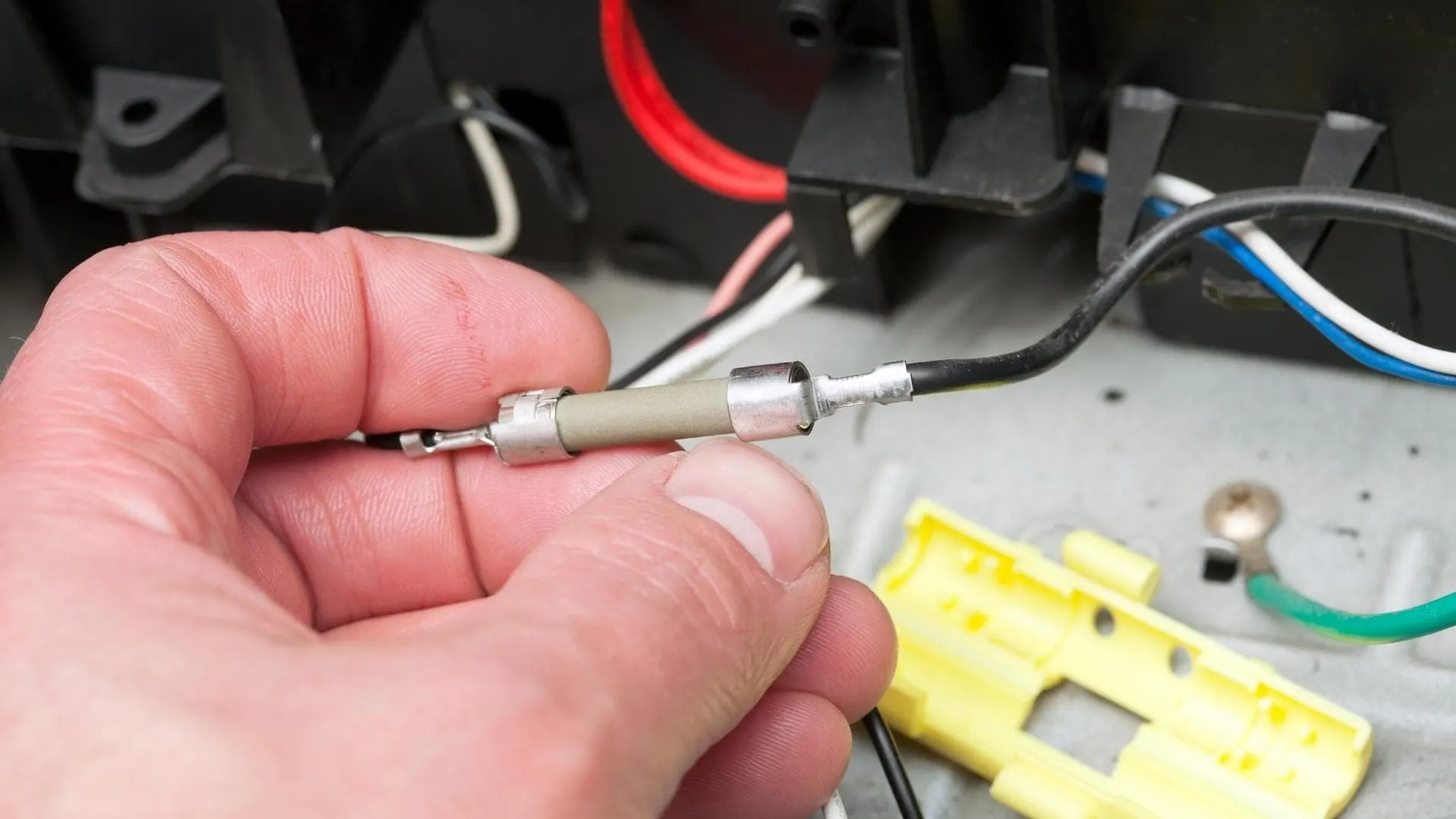
If you’ve been able to confirm that your RV microwave will not work even when plugged into a working outlet with an appropriate power supply, then it’s possible that the microwave’s internal fuse is bad.
Now let’s take a look at some other symptoms of an RV microwave not working, and how to troubleshoot them.
My RV Microwave Suddenly Turns Off While I’m Using It
If your microwave suddenly stops working while in use, there are several issues that could possibly be at hand. Here are some steps to troubleshooting a microwave that suddenly stops in mid-use.
Make Sure the Microwave Is Properly Vented
It’s important for your RV microwave to be properly vented. In many cases, the microwave will shut down if excessive heat build-up is experienced (which can include heat generated by the stovetop beneath the microwave).
Check the venting of your microwave to make sure it has the ability to vent properly.
Your Microwave’s Wattage May Be Too High
Another possibility if your RV microwave shuts down while in use is that it requires more wattage than your power supply is providing.
This is not uncommon when people replace their rig’s microwave with one that requires more wattage than the original.
If you do need to replace your microwave, be sure to select a replacement of the appropriate wattage.
Issue With the Power Source
As we noted within the troubleshooting steps related to a non-working microwave above, if your appliance is plugged into a faulty outlet that isn’t providing sufficient power, your microwave could shut down in mid-session.
Here again, as with the issue noted above, you can check the output of the outlet with a multimeter following these steps. If the voltage is too low, the microwave won’t function properly in that outlet.
But this could also be an issue with the outlet your RV is plugged into at the pedestal. If possible, try plugging your RV into a different outlet, as the issue could be there.
Are You Running the Microwave on Generator Power?
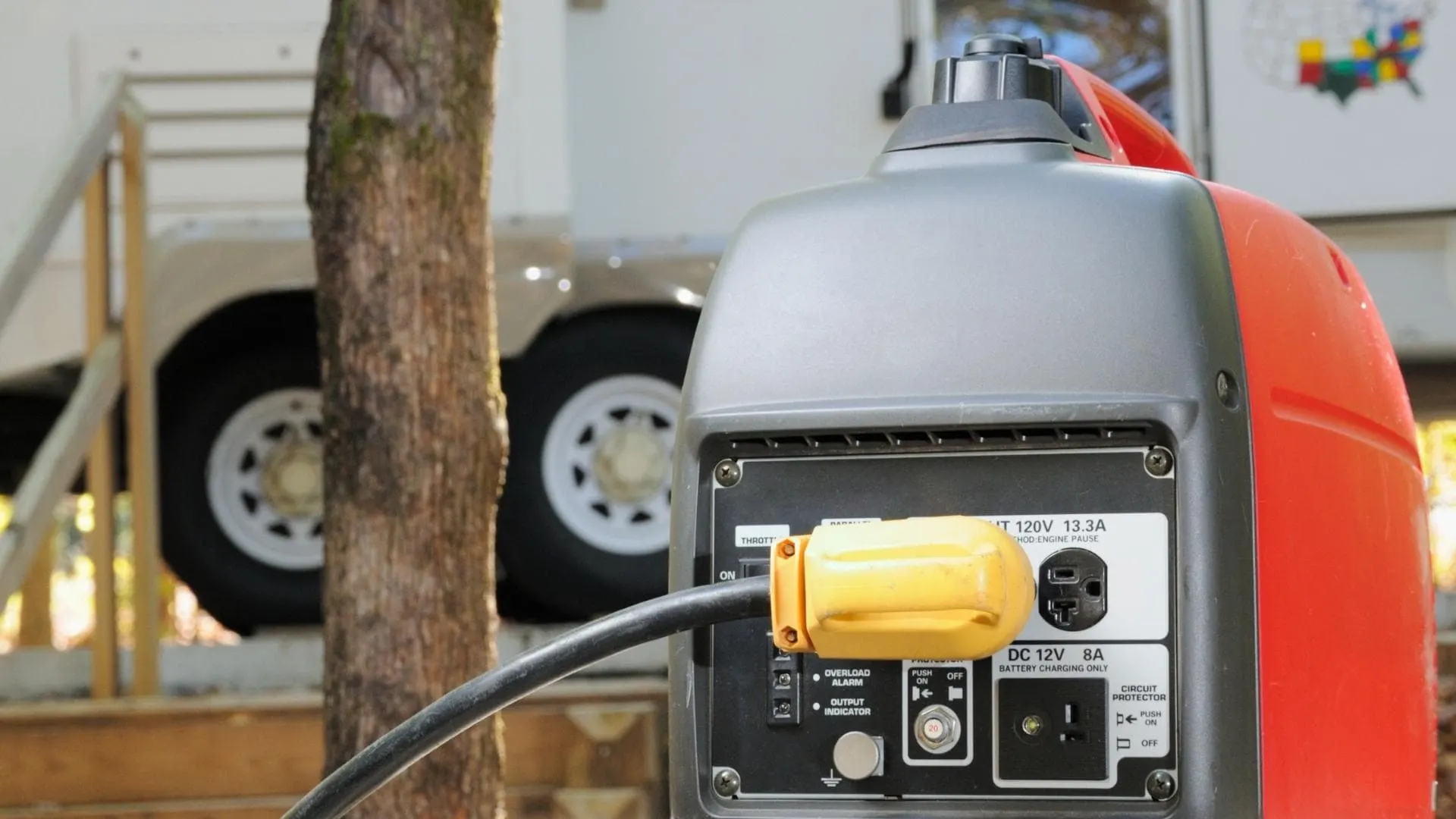
If you’re using a small portable inverter generator, it’s possible that it can’t supply sufficient wattage to operate your RV microwave. If you’re using your RV’s built-in generator, there could be an issue with the power supply coming from the generator.
If you’re running your microwave on your generator’s power, it’s possible that the generator isn’t supplying sufficient power to run the appliance. If the generator is too small to supply the proper wattage, if there are too many other 120V devices pulling power, or if the generator requires maintenance, it may not be able to power your microwave.
The best way to test this theory is to either shut off other 120V appliances (120V water heater, switch your RV refrigerator to run on propane, etc) or obtain power from another source (like a power pedestal) and see if the microwave works normally.
Are You Plugged Into a 15 or 20-Amp Power Source?
Speaking of plugging into a power source, sometimes a 15 or 20-amp power source doesn’t supply sufficient power to run a microwave.
In this case, the main symptom could be a non-working RV microwave or one that shuts down due to insufficient power.
Again, the remedy here is to try another power source.
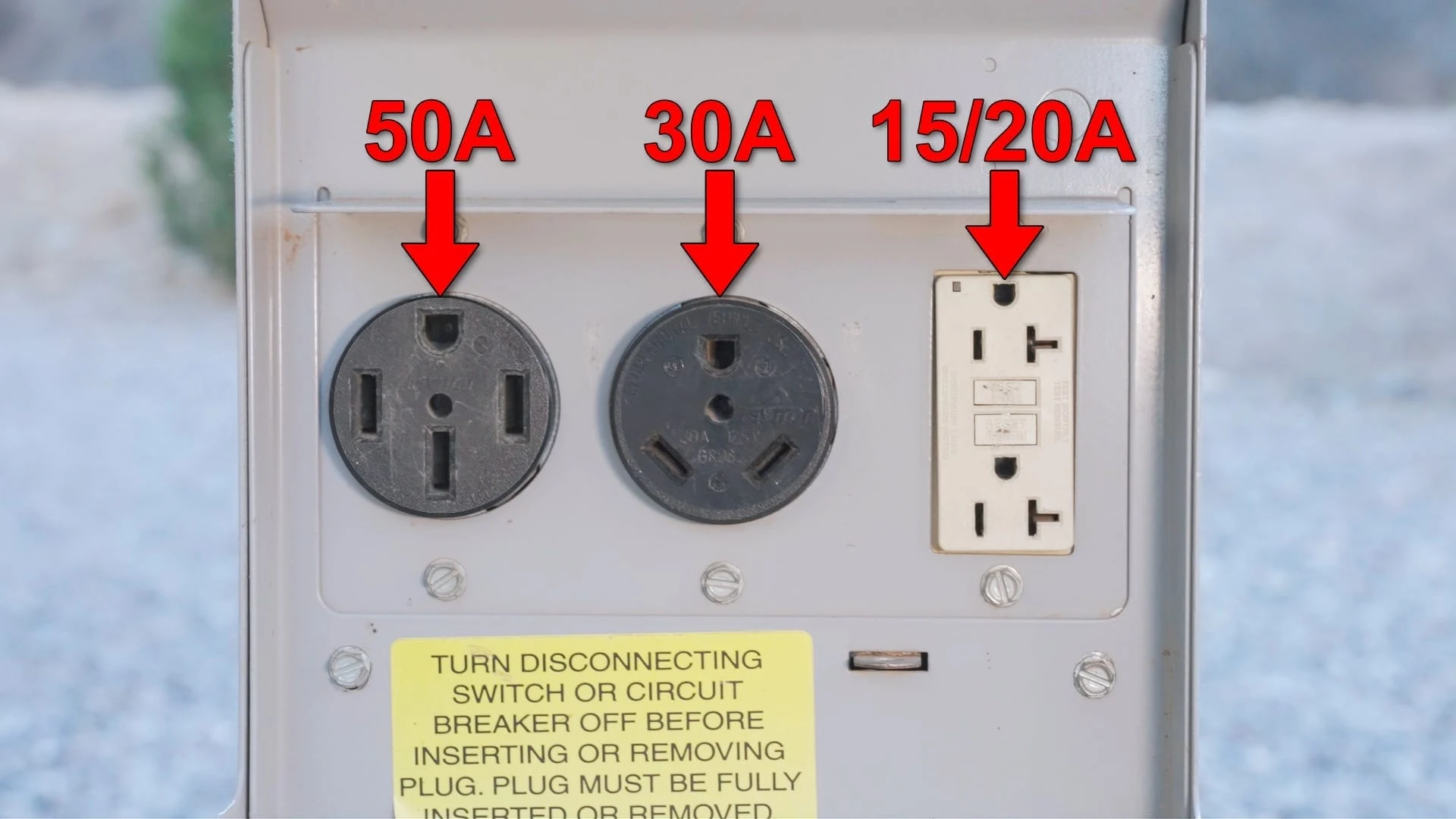
Make sure you’re plugged into a sufficient power supply for the proper operation of your RV microwave oven. Sometimes a 15/20-amp power source will not be sufficient to power a microwave.
My Microwave Runs But Isn’t Heating Food
If your microwave runs but doesn’t heat your food, it’s time to replace your microwave.
Remember that not only do you need to measure your current RV microwave to make sure it fits in the space reserved for a microwave oven in your RV, but you should also match the wattage of the microwave originally installed by your RV’s manufacturer. The wiring and circuit breaker were sized to supply the power your original microwave required. Exceeding that could cause a dangerous situation.
You may want a working microwave so you can do things like this:
Geek Out with Us Every Week
Join our newsletter to learn about all things RV-related. Every week we offer free tips, tricks, product reviews, and more to our online community of RVers. So, whether this is your first time on the road or you’re a seasoned expert, we’d love for you to geek out with us!



Richard
Sunday 3rd of March 2024
Another useful tool to determine if there is power at a plug is a non contact voltage tester.
TheRVgeeks
Sunday 3rd of March 2024
Thanks Richard!
Maria
Monday 30th of October 2023
New owner of RV. Plugged in portable heater in one outlet, it tripped. Now microwave, refrigerator, and other outlets don't work, only one outlet works. What happened?
TheRVgeeks
Monday 30th of October 2023
If you have checked and confirmed that no circuit breakers are tripped or off, it is almost certainly your GFCI outlet. That type of outlet is designed to protect from shocks near water sources, such as sinks or showers. But in RVs, they often string more than one outlet together. That means if the GFCI outlet trips, none of the other outlets connected to it will work either. You need to look at every electric outlet in your RV, especially in the kitchen and bathroom, to find the one with the two little rectangular buttons in between the two electric outlets. One of those is the test button, which trips it, and the other is the reset button which you need to push in firmly and it will reset all of the outlets. It is possible that there is more than one GFCI outlet. Hope this helps.
Cherie
Thursday 31st of August 2023
Hi I was using the microwave boiling bean's and I think it overheated but not due to the stove below. I've cooked for long periods before and haven't had any issues 🤷
Crystal
Saturday 19th of August 2023
We somehow just recently, only have partial power to the microwave (only a dim light inside the microwave and the turn table spins)! The plug works as I plugged in a paper shredder to test it. I’ve reset breakers (haven’t messed with the converter), reset GFCI plug in bathroom, and the air conditioner works, same for everything else in the RV. This is sounding like a microwave only issue, right? Anything I may be missing? Please let me know, thank you :)
TheRVgeeks
Tuesday 29th of August 2023
Hi Crystal. Sorry to hear about your troubles with your microwave (and for the delayed reply). Yes... based on everything you've done and tested (very thorough!), it sounds like the problem is with the microwave itself. Could be an internal fuse or something else that's blown. But, with the way they make things these days, it's likely easier and cheaper to replace the whole thing, rather than pay to have it fixed.
Stuart vick
Saturday 27th of May 2023
Third time using our microwave in camper. Kids used it for Mac and cheeses and worked perfectly. I tried to use it after that and nothing. The unit was running, but not heating. Replacement?
TheRVgeeks
Saturday 27th of May 2023
Oh boy, Stuart. It sure sounds like something must've failed. If you're going to get a replacement, just be sure you check the measurements (at least twice) so that the new one will fit correctly. RVs often have odd-sized microwaves very tightly installed in cabinetry, making finding a perfect replacement a challenge.